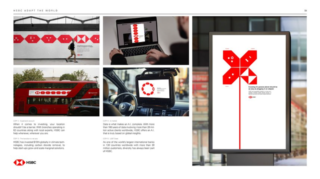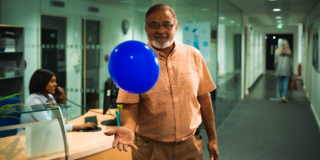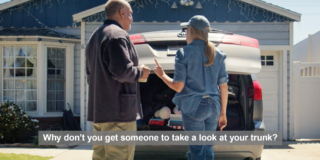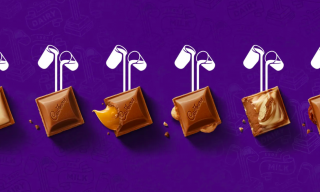We know that sparking emotions, changing perceptions, and building advocacy are high up on the list of ingredients for an effective campaign. But if we’re being honest, none of these things on their own can actually help brands grow. And if you’re wanting to sell your idea in the boardroom, you’re going to need something more substantial. A convincing way to explain why creative matters, and how you plan to get there. A bit more on that here.
Enter Paul Dyson with this study showing creative quality is one of the biggest multipliers of marketing effectiveness, second only to market share. But more than that, it’s the biggest lever marketers actually have control over. But remember, this isn’t about flair. It’s about method.
So—where to start?

Creativity begins with curiosity
Before a single concept is pitched or a storyboard is drawn, you need to start by listening.
Take ALDI’s 2024 “Shop ALDI First” campaign. Instead of forcing the fantasy that you can do a full weekly shop there, they did something radical—they told the truth. Most shoppers still needed to visit other supermarkets. But by listening to consumers and embracing that limitation, ALDI reframed their role. The result? A disarmingly honest campaign that not only cut through but shifted perception, built trust, and won big on effectiveness.

In your research, it’s not enough to profile an audience. Being curious means you need to understand what matters most to them. Their motivations. Their frustrations. The moments that shape their choices. You might even need to—gulp—actually speak to them.
And that’s what we did on the T1D (Type 1 Diabetes) Blue Balloon Challenge. The insight came from talking directly to people living with T1D, leading us to one simple truth—T1D is monotonous. Having to be endlessly vigilant about blood sugar, injections, carb counting, stress levels… It’s deadly, yes, but monotonous nonetheless. But worst of all, they felt misunderstood. If only there was a simple metaphor that could help them explain their condition. But that’s exactly what we did—
“Living with Type 1 Diabetes is like having to constantly keep a balloon in the air”
That single human truth became the foundation for a campaign that connected communities across continents—and helped a leading medical device company cut through a sea of sameness (competitors droning on about features, battery life, etc. etc.) and create a movement that’s still growing four years on. Not bad, right?
Insight turns research into opportunity
It’s easy to gather data. But what makes it meaningful is the ability to decode it.
Insight is what separates a relevant message from a resonant one. It’s the moment we shift from “what’s happening” to “why it matters”—and that shift is where breakthrough creativity begins.
In our ‘Shoot the Sh*t’ campaign for The Catherine McEwan Foundation, we uncovered that for people with IBD, the biggest barrier wasn’t the condition itself—it was loneliness and the sense of isolation it brought. That emotional insight led to a campaign that was impossible to ignore, from a world-first giant QR code made of toilet rolls to a short film that got people talking (and sharing).

B&Q’s “Build a Life” campaign is another example of insight-driven creativity that rewired convention in their category. While their competitors focused on fixing problems—leaky taps, wonky shelves, cracking paint—B&Q uncovered something deeper: many people don’t see DIY as drudgery—they see it as transformation.
By stepping into actual homes and listening, the brand discovered that home improvement wasn’t about maintenance—it was about meaning. So instead of trying to sell tools, they sold the emotional power of creating a home.
The result was a campaign built from real family footage across the UK and impressive results across five key brand metrics. It didn’t just shift perceptions—it re-established B&Q as a culturally relevant brand, reclaiming its place not just in the market, but in the nation’s hearts.

Strategy sets the stage for creativity
If insight unlocks the idea, strategy gives it direction.
In highly regulated categories like healthcare, for example, creativity for its own sake doesn’t fly. It needs to align with compliance, brand values, and behavioural outcomes. That’s where strategy earns its place—not as a slide in a deck, but as a bridge between truth and transformation.
That approach shaped our Colorectal Cancer campaign. Armed with a clear understanding of the barriers to screening—people not wanting to talk about colorectal cancer—we created a campaign where no one talks about colorectal cancer.
We didn’t just look for a clever idea—we developed one that challenged taboos, peppered in a bit of humour, and drove engagement in a space where it’s typically hard-earned.
But it’s not just healthcare. If we look at finance again, trust is fragile and emotional barriers are high. Brands need to tread lightly. But that doesn’t mean they have to play it safe.
Take HSBC’s 2024 “Adapt the World” campaign. Long known as the ‘World’s Local Bank’, they were suddenly facing increased pressure from FinTech disruptors offering similar international services—especially among younger audiences who lacked awareness of the brand’s legacy. The breakthrough came from a simple truth and the one thing international travellers prize above all else—their power adaptors.
This led to a creative idea. HSBC’s red-and-white hexagon was transformed into the prongs of 30 national plug types, deployed across 1,500 jet bridges in 17 global airports. With over 900 million passengers passing through each year, the idea was unmissable. The results? A 54% ad recall rate among exposed travellers. And among business flyers—who already view airport media as the most trusted—there was a notable lift in perceptions of HSBC’s international expertise. Another clever use of cultural relevance and creative application grounded in human insight.

Decoding the magic
Creativity isn’t a luxury. It’s a competitive advantage. But it only works when it’s engineered—when it starts with research, is sharpened by insight, shaped by strategy, and expressed with brave creative thinking.
That’s what effective campaigns are all about.





